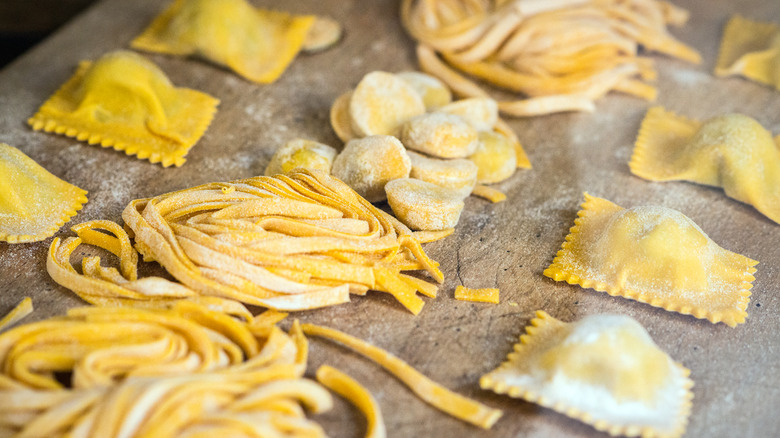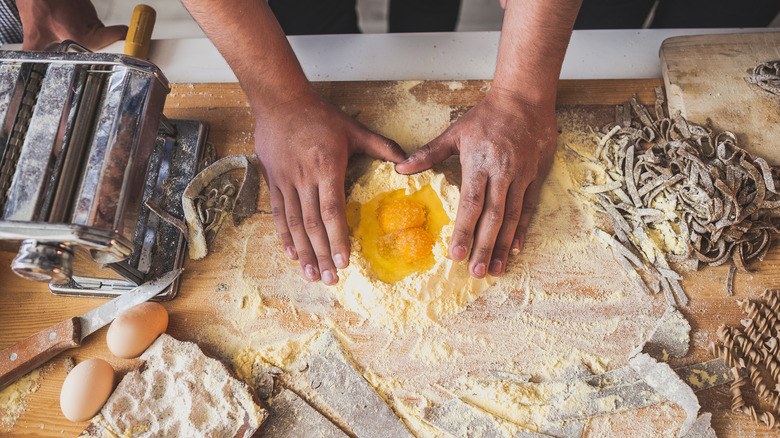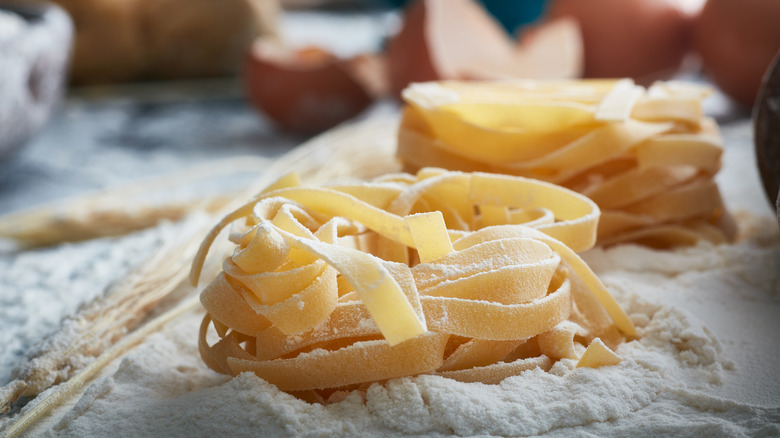Not Letting Pasta Dough Rest Is A Culinary Disaster Waiting To Happen
Making pasta from scratch is profoundly satisfying. Cracking eggs into a well of flour and slowly working it until it's a uniform ball of dough and possibility is a true delight. It can be easy to fall prey to the desire for instant gratification, though — after forming the pasta, it's time to roll, cut, cook, and eat it, right?
The reality is that homemade pasta dough needs to rest before you get to the good part. Skipping the crucial step of letting the dough do its thing isn't just a small error or personal choice; you won't be able to roll the dough if it's still too tight and dehydrated. This can, frankly, ruin pasta, and there are few things in life as sad as subpar noodles.
Pasta, at its core, is the beautiful marriage of four ingredients: flour, eggs, oil, and salt. Of those, the eggs (specifically, their water content) and flour are the primary stars — their combination is what makes pasta form gluten. And letting the dough rest is what allows the gluten network to loosen, making the dough properly stretchy. This will also let the pasta fully hydrate. Without allowing that to happen, pasta dough becomes nearly impossible to work with.
How to let gluten form the perfect texture
It's not just about letting the pasta rest so the gluten bonds relax, making the dough malleable and easy to work with. Beyond that, it's also about the gluten magic that gives pasta its signature bite. Without it, pasta wouldn't hold together when stretched nor satisfyingly tear when bitten.
To maximize stretch, it's important to let your pasta rest for at least 30 minutes. This isn't so long that it doesn't feel like you can make pasta on a whim, yet it's just long enough to ensure a tasty meal. So, let the dough sit in the fridge or at room temperature while the gluten does its thing.
Once it's ready, the dough should feel smooth and pliable without being too sticky. When handling it, it shouldn't tear too easily. It takes some practice, but pasta dough is pretty simple once you have the basics down.
What to do after resting
Once the dough has rested, it's ready to go, and you can get started turning it into a delicious meal by rolling it, cutting it, and then cooking the fresh pasta. In an article for Forbes, executive chef Christopher Gross explains, "Roll it out with your rolling pin until the dough is very thin," and then, "you can cut it any way you'd like." Whether you decide to make long pasta noodles like fettuccine or are cutting squares for ravioli, a properly rested dough should be very easy to work with.
Once the pasta's made, it's time to consider how you're storing it. Fresh pasta has a shorter lifetime than the store-bought options, but that doesn't mean you can't save it for later. Your fresh pasta will last overnight in the fridge if you want to make it ahead of tomorrow's dinner. If you're looking to store it longer, drying it will allow it to last about 2 to 6 months. Freezing the pasta will ensure you can enjoy it for up to 8 months.
Once you've mastered homemade pasta, it's easy to make both ahead of time and in the moment.


